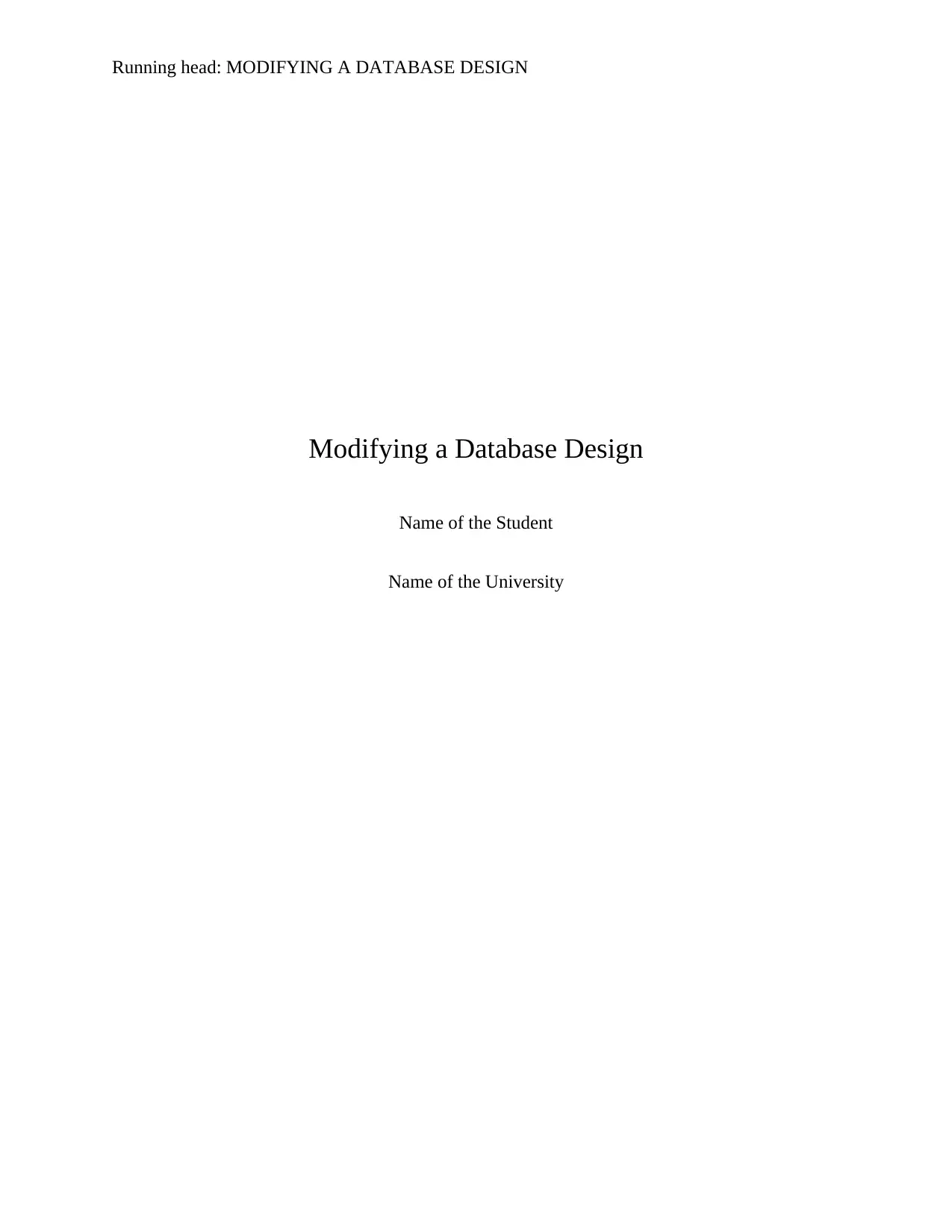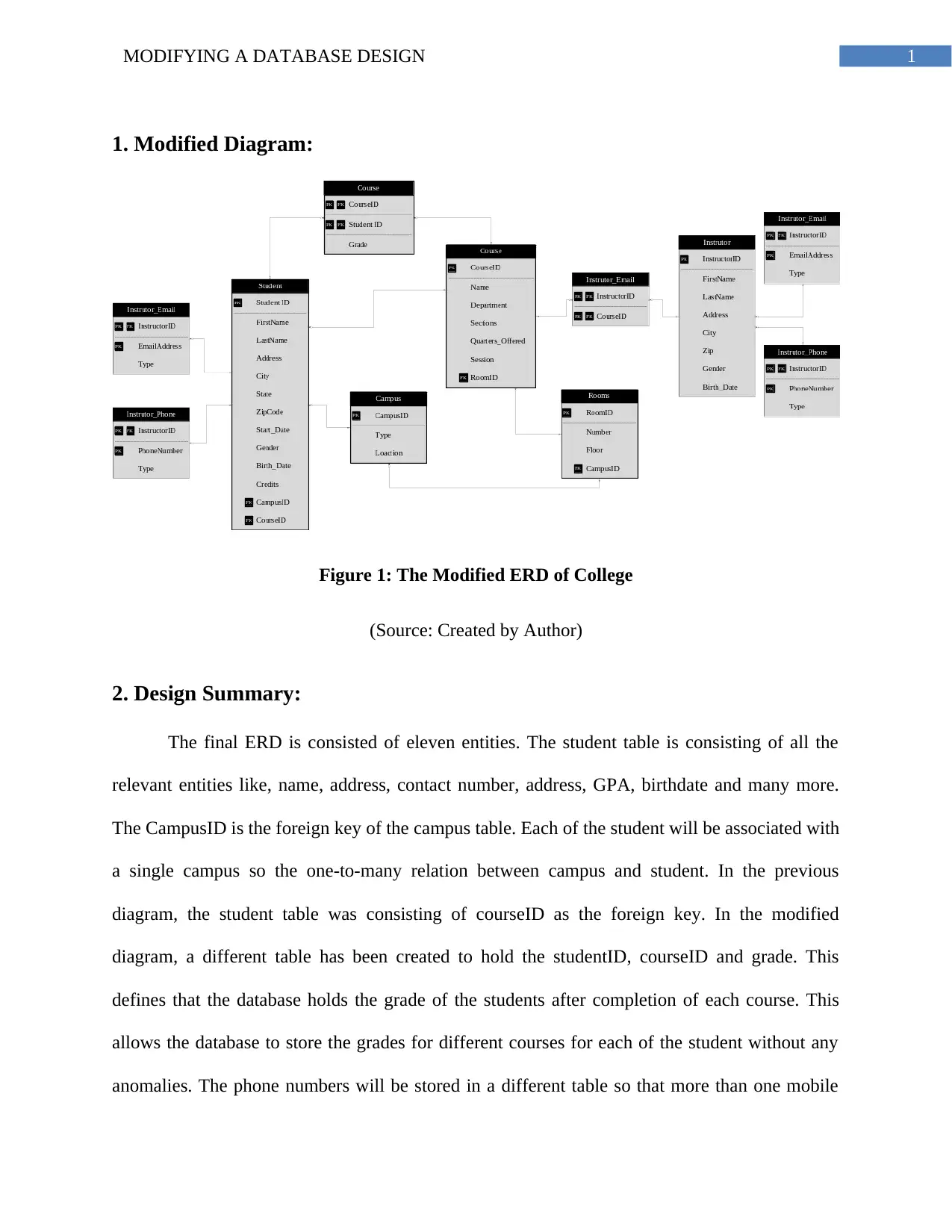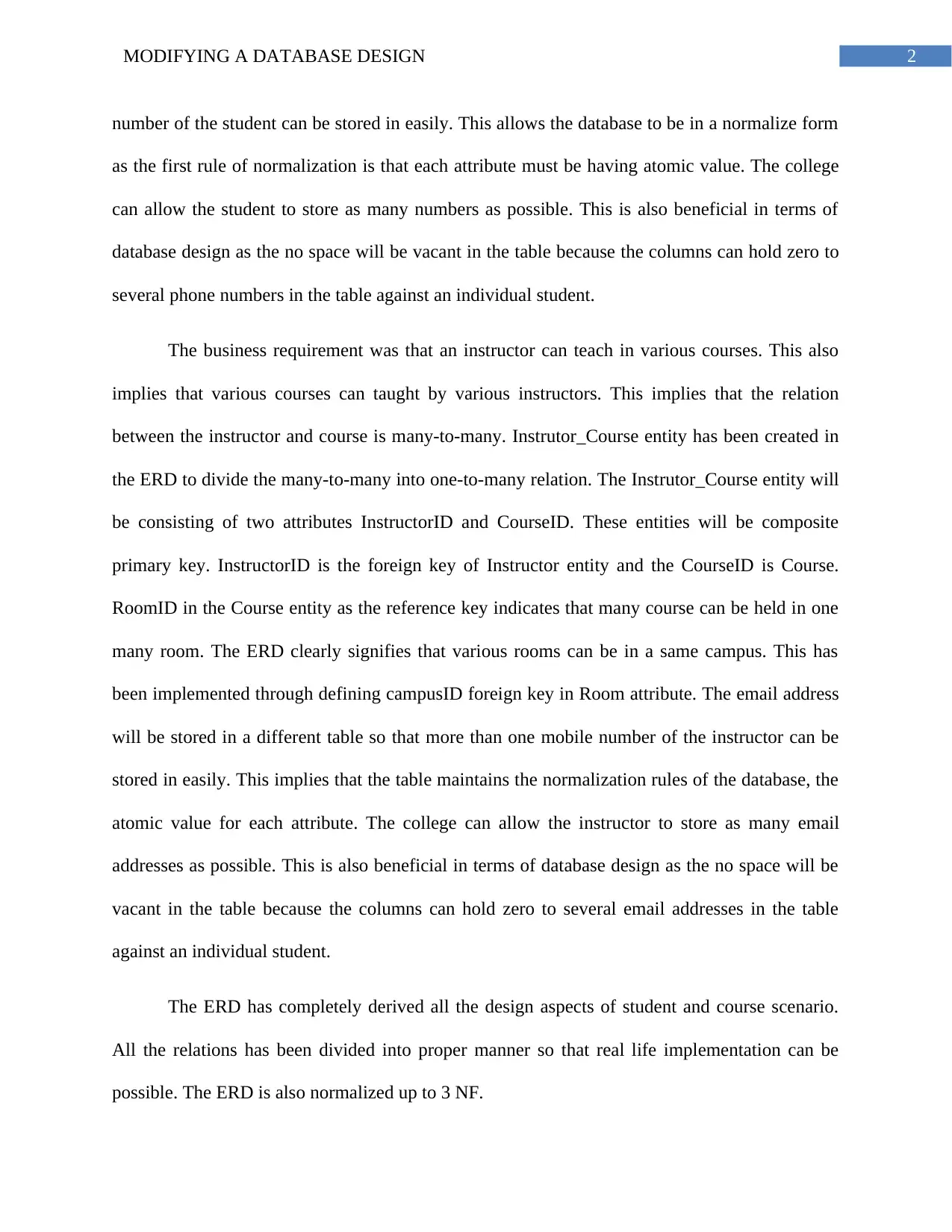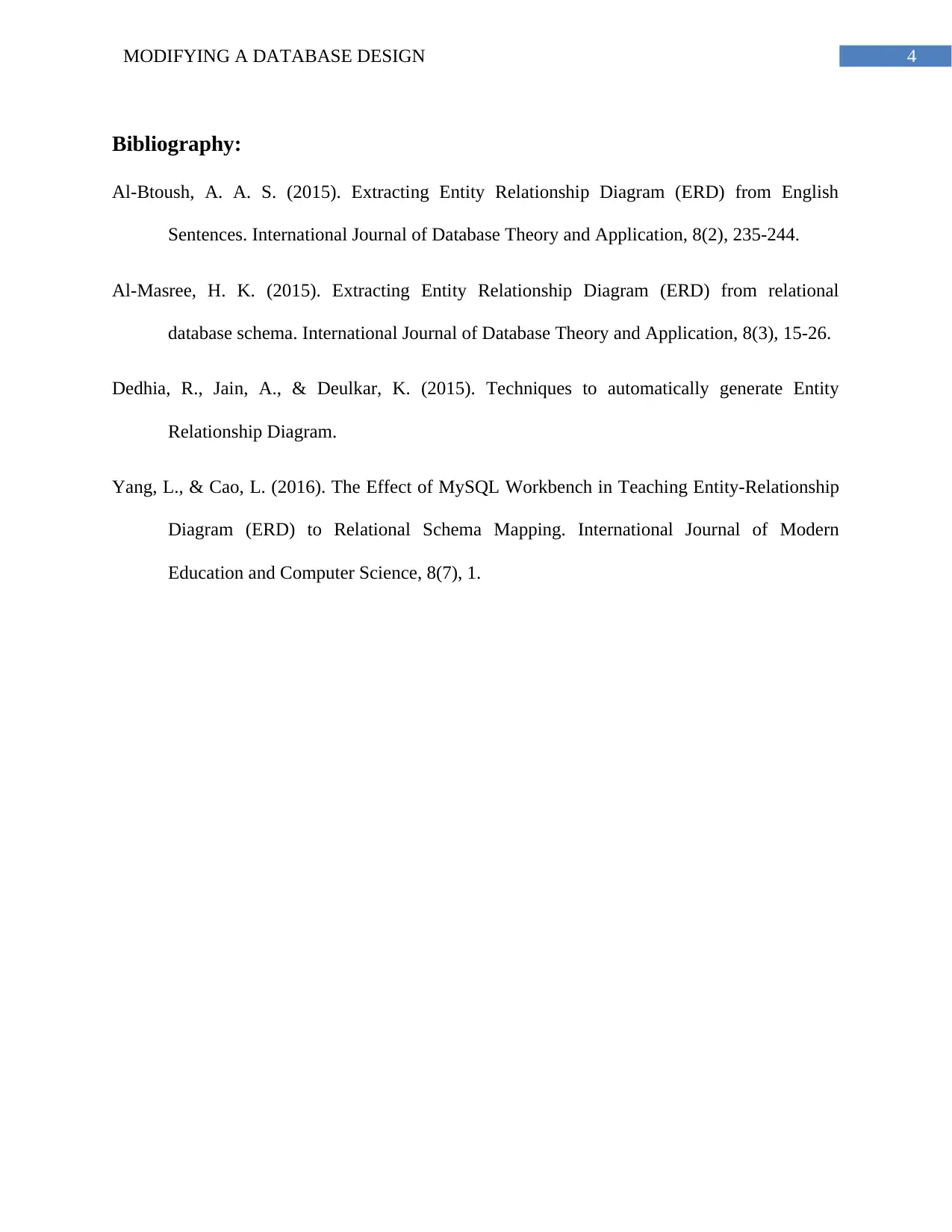Database Design Modification Report: College Database Design Analysis
VerifiedAdded on 2020/05/16
|5
|719
|318
Report
AI Summary
This report presents a modified Entity Relationship Diagram (ERD) for a college database, addressing design improvements and normalization. The report details the ERD's structure, consisting of eleven entities, including student, campus, course, instructor, and room tables. The student table incorporates essential attributes like name, address, and GPA, with CampusID as a foreign key establishing a one-to-many relationship. Modifications include the creation of separate tables for student grades and phone numbers to achieve normalization and accommodate multiple entries. The report explains the many-to-many relationship between instructors and courses, implemented through an Instructor_Course entity. The ERD also illustrates relationships between rooms and campuses, and the use of a separate table for email addresses for instructors. The design adheres to normalization principles up to 3NF, ensuring efficient and scalable database operations. The report concludes with a bibliography of relevant research papers.
1 out of 5











![[object Object]](/_next/static/media/star-bottom.7253800d.svg)